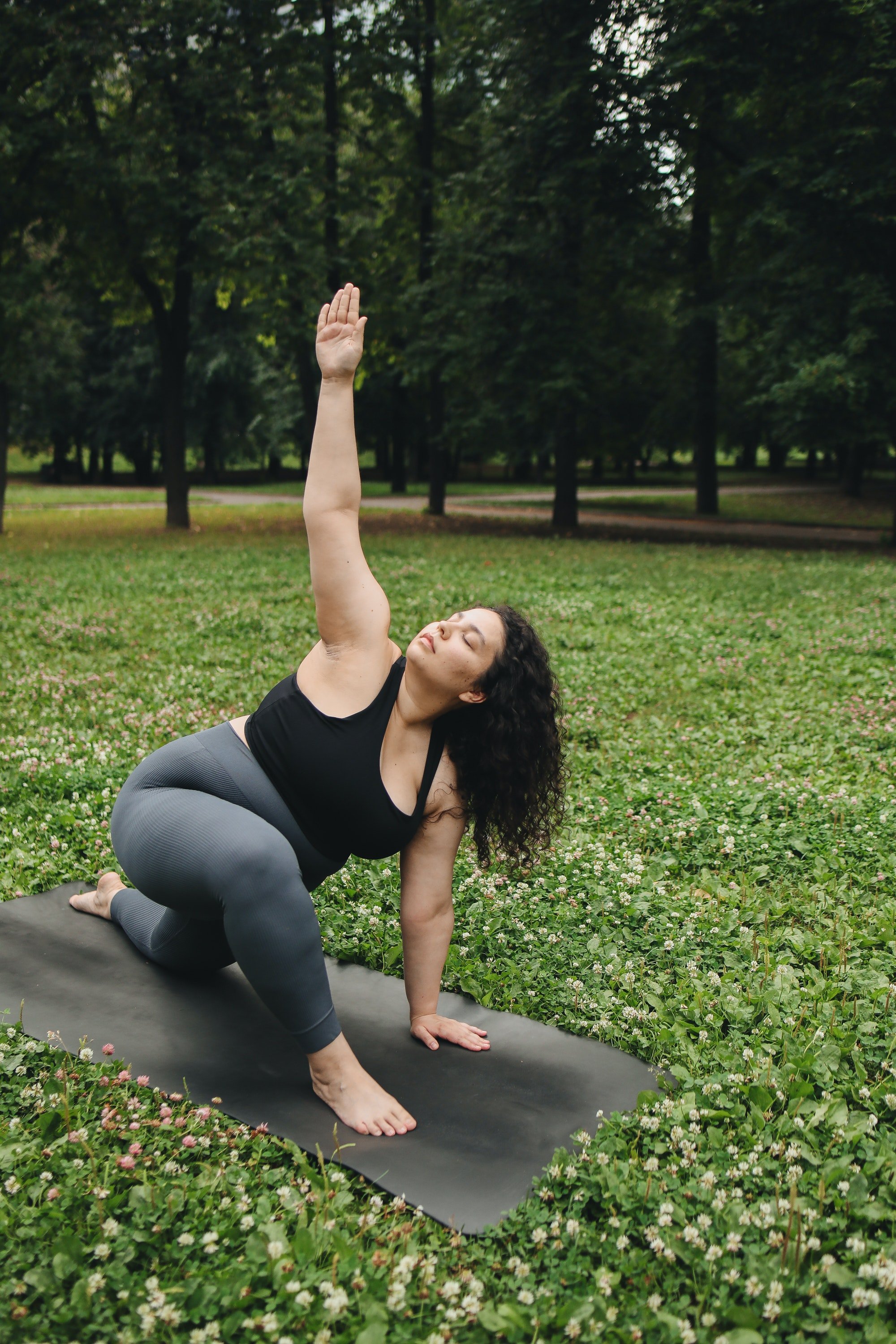Movement can be joyful. Movement can be challenging. Movement can feel wonderful, and movement can feel triggering - especially when we don’t feel like our bodies belong.
We know, in no uncertain terms, that moving our bodies improves both our physical and mental health. Unfortunately, the majority of the fitness industry doesn’t make every body feel welcome. Not dissimilar to the fashion industry, fitness is missing out on a major population of people who would be eager to engage if there were services that fit their needs. This includes people who live in larger bodies, who have differing levels of ability, who are recovering from eating disorders or disordered relationships with exercise, or who otherwise don’t feel welcome due to their race, religion, gender, sexual orientation or financial background.
Luckily, there is a small (growing?) corner of the fitness community that does in fact try to make all bodies and abilities feel welcome. I often get requests for ideas on where to look if fitness feels intimidating or unwelcoming. I have compiled a list of options that I am familiar with for anyone interested in exploring movement in a flexible way - not a punishing, “I have to change my body” kind of way.
All resources below have online options for engaging in fitness. Budget-friendly tip: most of these instructors either have free content on their websites and social media and/or offer free trials of their programs. I will try to continue to update the list as I learn of more resources.
Yoga:
The Underbelly Yoga & Wellness with Jessamyn Stanley: “Vison: To create and foster a community for everyone, including those who have ever felt overlooked, underserved and left out by the wellness industry. To empower you to show up and take up space. Define and achieve wellness in a way that makes sense for you.” https://theunderbelly.com/
Full Being Yoga with Dana Falsetti: “Dana Falsetti is a white, fat, non-binary, disabled person, a speaker, writer, and the founder of Fullbeing. At 22 they started traveling and teaching yoga workshops in person and online with the intention of reaching those who felt othered because of how their bodies are treated and seen.” https://fullbeingyoga.com/dana-falsetti-classes/
More to Love Yoga with Rachel Estapa: “Rachel Estapa, founder and CEO of More to Love, is passionate about empowering people to love and appreciate their bodies. Her own path to body acceptance began many years ago. After yo-yo dieting throughout her teenage years and into adulthood, Rachel took stock of her life and realized she wasn’t happy. Even when she reached her “goal weight,” she felt something was missing. That’s when she decided she would stop trying to change her body and instead she would focus on loving the body she has.” https://www.moretoloveyoga.com/
Pilates and Strength Building:
The Be.come Project with Bethany C. Meyers: “the be.come project is a subscription-based fitness platform built on the idea of bringing inclusivity, approachability and body-neutrality to the fitness world.” https://thebecomeproject.com/
Hybrid Calisthenics with Hampton Liu: “... the true revelation may be that physical exercise itself has applications beyond building strength, gaining muscle, and losing fat. Because these goals are so popular, there is a seemingly endless supply of products and educational content to help people achieve them. However, there are applications beyond this. Hybrid Calisthenics is the initiative to help people better their lives and achieve unconventional goals.” https://www.instagram.com/hybrid.calisthenics/?hl=en
Kara Duval Pilates: “I love to celebrate my body for what it can do opposed to what I think it should. You will quickly find that my teaching philosophy is the complete embodiment of this.” https://www.karaduvalpilates.com/ *Bonus: Kara is open about her own journey of recovery from disordered eating and body image after years spent dancing ballet.
Dance & Aerobics:
The Fitness Marshall: “Hailed as the modern day Richard Simmons meets Britney Spears, The Fitness Marshall is the internet's favorite fitness pop star delivering non-stop, easy to follow dances to his 5 million followers across social media. Caleb along with his two Backup Booties welcome and celebrate every age, size, ability, color, and gender expression. No matter where you are in your journey, you have a place with them on the dance floor.” https://thefitnessmarshall.org/
Curves with Moves by Jessie Diaz-Herrera: “Diaz-Herrera now teaches in NYC and structures her classes to suit all body types and dance levels. Not your typical dance class, she ensures that the environment is judgment free, incorporating body positive talk and affirmations during the sessions to make her students feel comfortable at any dance level. Her mission is not to just teach dance but to empower her students to learn how to love their bodies through dance.” https://www.instagram.com/curveswithmoves/?hl=en
Personal Training & Pole Dancing with Roz the Diva: “Come as you are. I'm a dark skin, semi-bald, overweight, outspoken woman who runs around NYC half naked. I'm also a proud ally of the LGBTQ+ community; I'm already a fan of your religion; your disabilities don't scare me; the only race I see is pizza. Unless you're a total douche bag, we're already BFFs.” https://www.rozthediva.com/




